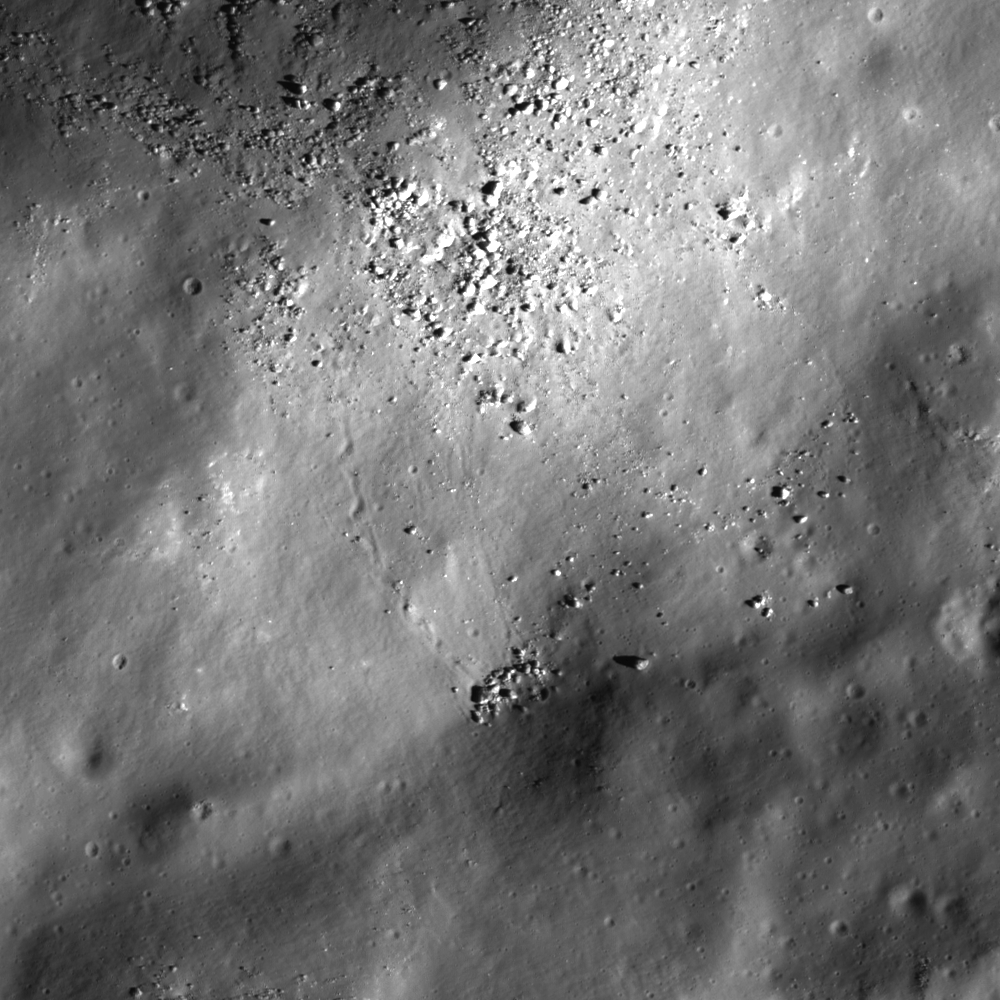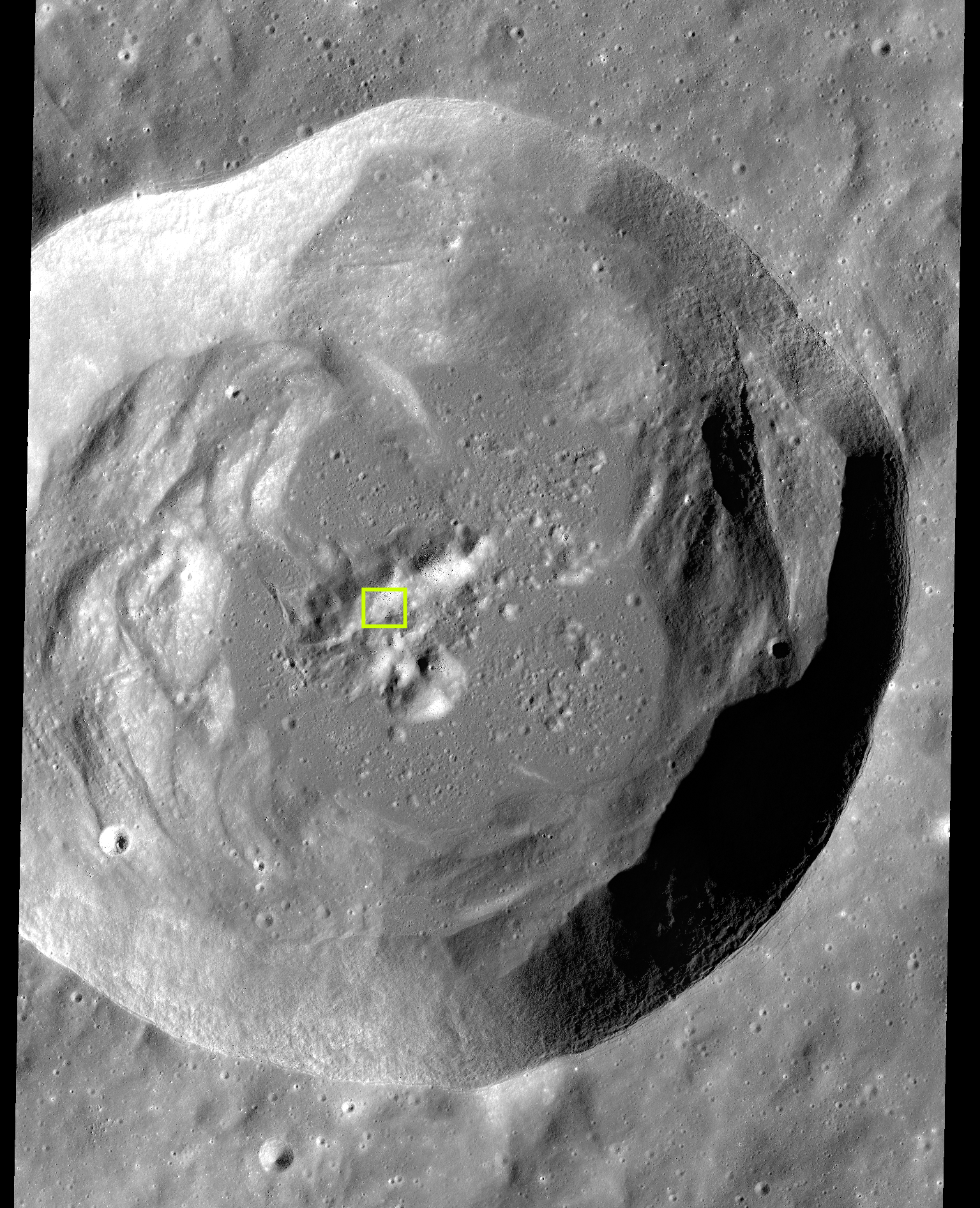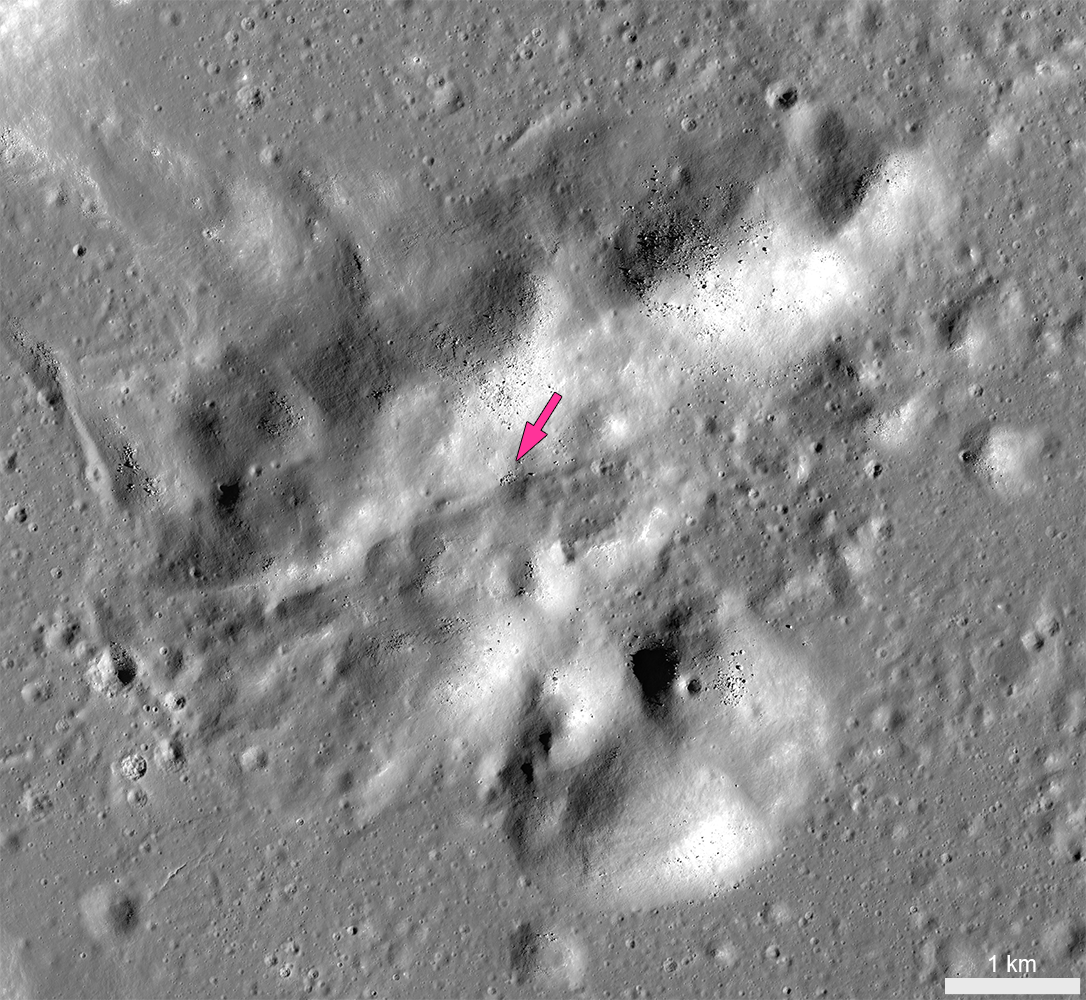
Steno Q is a 32 km diameter crater located in the highland terrain east of Mare Moscoviense. Impact craters, including Steno Q, are formed through a three-stage process consisting of: 1) contact and compression, 2) excavation, and 3) modification. The initial crater cavity is formed during the excavation stage; during this stage, the excavated material is ejected from the crater, leaving a roughly bowl-shaped void. During modification, the last stage, the shape of the crater cavity adjusts as a function of planetary gravity and scale of impact. For larger impacts, a complex crater shape is formed as a result of a large degree of crater modification: the walls of complex craters slump through gravitational instability, a central peak forms through rebound, and impact melt and debris collect in the crater floor. Typical of other similarly sized Copernican age craters (those younger than 1 billion years), Steno Q preserves a central peak, steep walls with large slump blocks, and a sizeable pond of solidified impact melt rocks covering the lowest parts of the crater cavity.
Explore more complex craters around the Moon: Terraces in Eratosthenes Crater, Not your average complex crater, Impact melt features in Tycho craters floor, Aitken Central Peak, Seen Obliquely, Icarus, Copernicus Central Peak From The West.
Today's Featured Image closely examines part of the central peak of Steno Q. The central peak is roughly 10 km wide and consists of tall mountains more than 2 km high. The crests of several of these mountains are blocky and composed of highly stressed and fractured materials from the deepest part of the crater. Over time, boulders perched on these steep slopes can roll downhill as a result of seismic tremors and the shaking caused by nearby impacts. A small depression near the middle of the central peak preserves a collection of boulders accumulated from upslope. Some of these boulders are more than 20m wide -- as big as a house! To get an idea of just how big that is, watch this video of Apollo 16 astronauts Duke and Young approach a similarly sized rock. The Apollo 16 "House Rock" is located on the rim of a small, roughly 1-km diameter crater, North Ray crater. In Steno Q, boulder trails of the most recent boulder falls indicate the source of the material upslope. Boulder accumulations like this provide a unique opportunity for future explorers to collect a variety of materials derived from potentially inaccessible areas (such as steep mountain peaks).
The images in this post were derived from a 1.5 m/pix scale LROC NAC controlled mosaic -- explore the entire Steno Q crater!
Related Posts with more evidence of bouncing, rolling, and sliding boulder action:
Boulder trails in Menelaus crater
Lazy Boulders in Scaliger Crater
Published by J. Stopar on 12 December 2013

